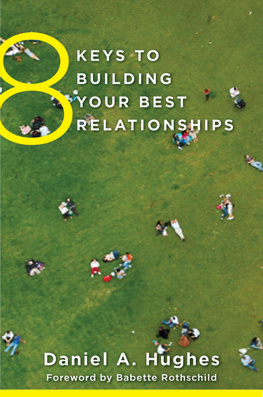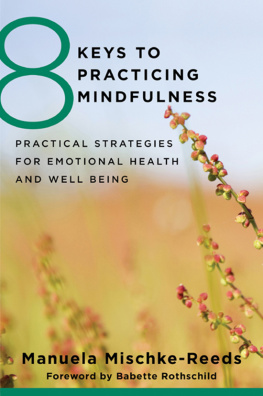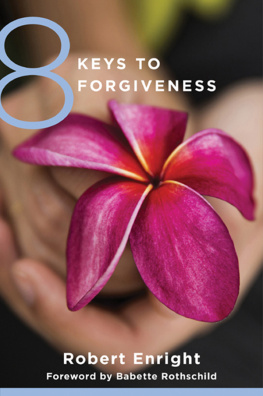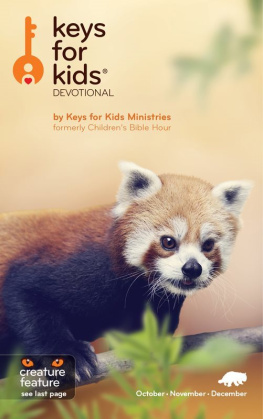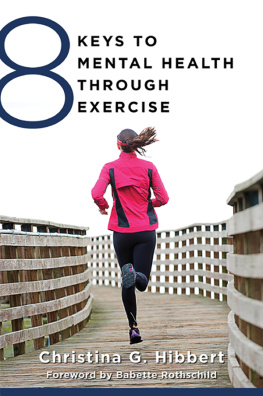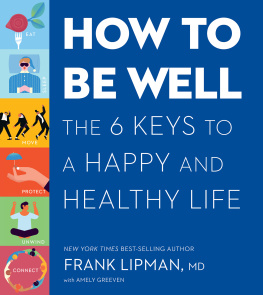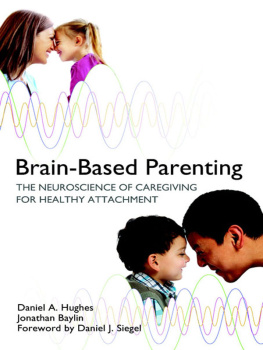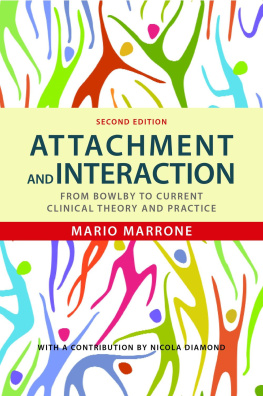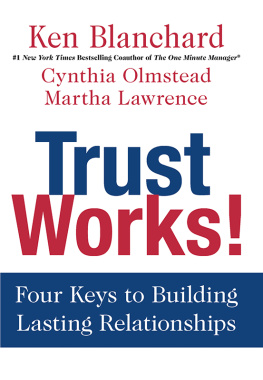Daniel A. Hughes - 8 Keys to Building Your Best Relationships (8 Keys to Mental Health)
Here you can read online Daniel A. Hughes - 8 Keys to Building Your Best Relationships (8 Keys to Mental Health) full text of the book (entire story) in english for free. Download pdf and epub, get meaning, cover and reviews about this ebook. year: 2013, publisher: W. W. Norton & Company, genre: Home and family. Description of the work, (preface) as well as reviews are available. Best literature library LitArk.com created for fans of good reading and offers a wide selection of genres:
Romance novel
Science fiction
Adventure
Detective
Science
History
Home and family
Prose
Art
Politics
Computer
Non-fiction
Religion
Business
Children
Humor
Choose a favorite category and find really read worthwhile books. Enjoy immersion in the world of imagination, feel the emotions of the characters or learn something new for yourself, make an fascinating discovery.
- Book:8 Keys to Building Your Best Relationships (8 Keys to Mental Health)
- Author:
- Publisher:W. W. Norton & Company
- Genre:
- Year:2013
- Rating:3 / 5
- Favourites:Add to favourites
- Your mark:
- 60
- 1
- 2
- 3
- 4
- 5
8 Keys to Building Your Best Relationships (8 Keys to Mental Health): summary, description and annotation
We offer to read an annotation, description, summary or preface (depends on what the author of the book "8 Keys to Building Your Best Relationships (8 Keys to Mental Health)" wrote himself). If you haven't found the necessary information about the book — write in the comments, we will try to find it.
Bringing attachment theory essentials to everyday life.
8 Keys to Building Your Best Relationships (8 Keys to Mental Health) — read online for free the complete book (whole text) full work
Below is the text of the book, divided by pages. System saving the place of the last page read, allows you to conveniently read the book "8 Keys to Building Your Best Relationships (8 Keys to Mental Health)" online for free, without having to search again every time where you left off. Put a bookmark, and you can go to the page where you finished reading at any time.
Font size:
Interval:
Bookmark:

I have been fortunate over the years to have had many, many wonderful relationships with many people who are very special to me. I must begin with my parents, Marie Collier and William Hughes, who provided me with the knowledge that I was loved and always would be. Alongside was my maternal grandmother, Mary Meehan, who lived with us and who always seemed to have time for me when I wanted her time. And I also must include my six siblings, with whom I learned about laughter and anger, sharing and not sharing, giving and receiving. I continue to learn from them to this day. I would never have written this book without the presence in my life, beginning when I was 17 years old, of Rev. Edward Murray, who was a mentor and guide in my journey from adolescence well into adulthood.
I cannot mention one friend without mentioning many. There have been many moments of joy and sadness, accomplishing tasks and having fun and adventure together, remember the past, enjoying the present and planning the future. Finally, I think of my children and my grandchild. I have received from them at least as much as I have given to them. My life story is as much about being a father and grandfather as it is anything else.
What accomplishments I have attained in my life are not mine. They reflect what I have received from these many special people who are part of who I am. This book would not have been written without the inspiration that I have received for a number of years from Dan Siegel and the Mindsight Institute. Using the current extensive research about the workings of the brain, Dan and colleagues have demonstrated how much the functionality of our brains depends on having healthy relationshipsthat brains are, in fact, designed to maintain relationships. The Mindsight Institute is committed to spreading the word about this symbiotic relationship between relationships and the brain, and to facilitating the development of relationships among individuals, groups, communities, and nations.
And finally a note of gratitude to Andrea Costella Dawson, who has been my most creative and patient editor for all of my books with Norton, to the other excellent professionals at Norton, and to Babette Rothschild.
S tephanie found that she was very attracted to Jonathan, so much so that she was thinking about giving up a satisfying position at her firm in order to move with him to another city where he had been transferred. She was worried because she did not know him very well. She was even more worried because in the past 8 years she had greatly disrupted her life twice in similar situations in her efforts to have a relationship with a man, efforts that proved unsuccessful both times. Yet Stephanie knew that no matter what she told herself about the need for caution, she was likely to give everything up once again. She wanted to listen to a friend of hers telling her that she needed to go slow, but she found herself impulsively saying yes to Jonathans suggestion that she move away with him, away from her deeply satisfying career and her community. To better understand Stephanies behavior, it helps to understand a bit about attachment theory.
Are you comfortable turning to your partner for comfort or guidance? Do you lean on your best friend for support when you experience distress? How do you handle conflict with your partner or friend and how do you repair your relationship after conflicts arise? These questions get at the heart of identifying what makes a relationship healthy, and their answers can be found within attachment theory.
Attachment Theory
Attachment theory emerged in London, England, around 1950 as a model for understanding central features in an infants relationship with his or her parents. The concept was developed by John Bowlby, an English psychiatrist. The theorywith the active collaboration of Mary Ainsworthquickly gained traction in the United States, incorporating a strong research component. It has gradually evolved into a central organizing theory worldwide to explain how human beings develop in the context of relation ships at all ages. Attachment theory delineates how infants early relationships with their parents influence the central characteristics of all future relationships. This theory has come to describe key features of these relationships, features that are present among all types of relationships across many cultures and situations.
Attachment theory helps us to understand not only meaningful relationshipsboth healthy and not so healthybut also how the person within the relationship functions. Because of our attachment histories, we tend to approach relationships with patterns of thought, emotion, and behavior that are relatively consistent over time and between relationships. The realities of our attachment patterns permeate the way we relate, as well as the nature of our relationships.
In addition, how we are perceived by our attachment figures greatly influences our self-perception. Attachment relationships influence who we are much more than do relationships in which we dont feel particularly attached to the other person.
As all this makes clear, in understanding healthy relationships, attachment matters. In this chapter I will present an overview of attachment and its central characteristics. This will help to create a scaffold as I explore the remaining seven keys to a healthy relationship in the rest of this book. Qualities inherent in attachment theory will be made evident as I describe the features of healthy relationships and outline ways of attaining them.
The Infants Attachment: From Safety and Security to Exploration
Attachment begins with safety. When infants are in distresswhen they experience a threat to their safetytheir parents meet their needs, whether for food, warmth, comfort, or engagement, and these infants distress is relieved and they are ready to be engaged with the next moment in their day. For an infant, attachment is necessary for survival because the infant is not able to meet his or her own most basic needs. Infants need their parents.
Safety
Intellectually, you certainly know that you needed your parents when you were very young, but do you recall any specific instances when you felt a need of them? Do you recall times when you were hurt or frightened? Did you seek out your parents or did they come to you when you cried? Most likely, both patterns generally occurred: You sought their help and they came to you when you were in distress. If, however, for whatever reason, they did not provide help when you needed it, you may have developed a habit of not seeking help from others when you are in distress. In fact, when hospitalized infants undergoing medical procedures experience intense, ongoing pain that their parents are not able to reduce, those infants are at risk for reducing their readiness to turn to their parents in the future when in distress.
As infants experience their parents keeping them safe again and again in situations involving all manner of threats, they begin to feel increasingly secure within their relationships with their parents. They expect that their parents will keep them safe, and they do. They come to notice that their parents are different from other adults in many waysprimarily involving the parents consistent ongoing contact with the infants and their being ready and able to keep them safe. The infants increasingly recognize that their sense of security relates to being near their parents and interacting with them. The infants develop a strong desire to be with their parents rather than with other adults. They are likely to develop various degrees of anxiety when other adults are present but their parents are not. They are secure when they are with their parents. They can trust their parents ability and motivation to care for their needs.
Next pageFont size:
Interval:
Bookmark:
Similar books «8 Keys to Building Your Best Relationships (8 Keys to Mental Health)»
Look at similar books to 8 Keys to Building Your Best Relationships (8 Keys to Mental Health). We have selected literature similar in name and meaning in the hope of providing readers with more options to find new, interesting, not yet read works.
Discussion, reviews of the book 8 Keys to Building Your Best Relationships (8 Keys to Mental Health) and just readers' own opinions. Leave your comments, write what you think about the work, its meaning or the main characters. Specify what exactly you liked and what you didn't like, and why you think so.

